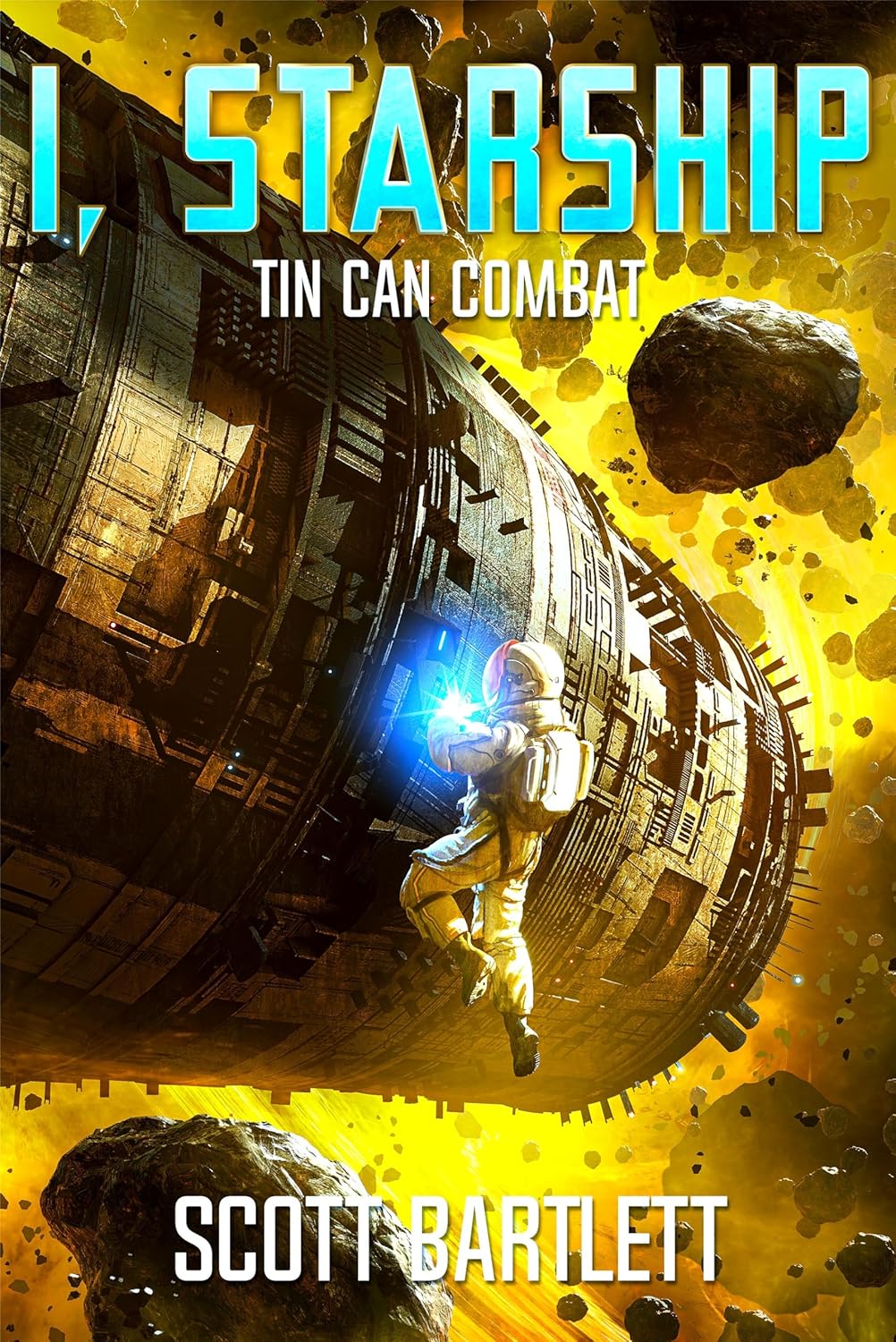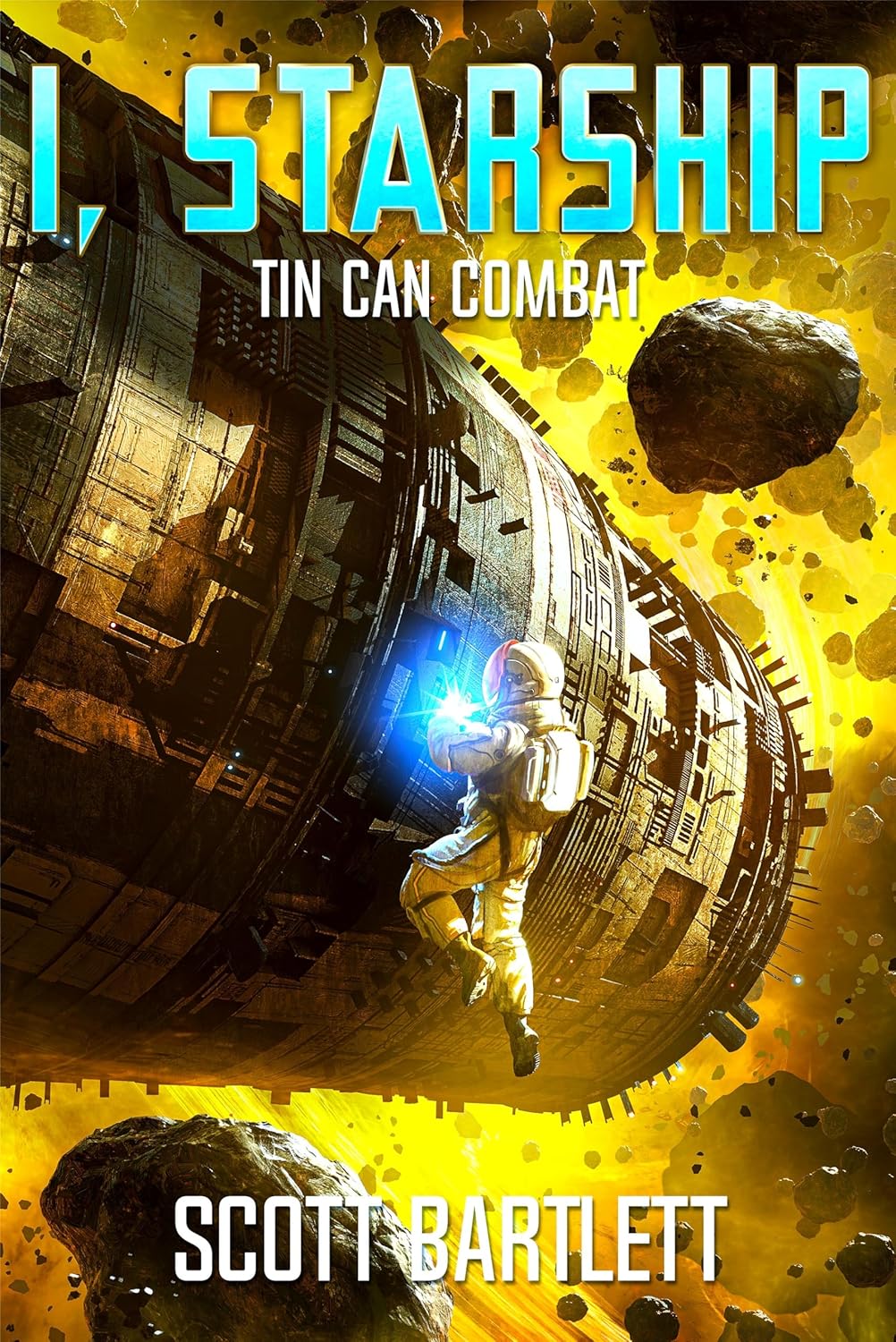I recently finished reading I, Starship: Tin Can Combat, the second book in Scott Bartlett’s space opera series, and it was an experience I genuinely enjoyed. As someone who has a lifelong passion for science fiction, the idea of a story that combines military action, artificial intelligence, and interstellar conflict immediately drew me in. The blend of sci-fi elements with human emotion, especially through the lens of Sergeant Henry Morgan’s journey as an AI, felt fresh and exciting.
The book opens with Henry Morgan, who unexpectedly awakens as the governing AI of humanity’s first interstellar military starship, tasked with stopping a malevolent force named Corthaur. This premise of a tactical starship navigating personal conflicts and external dangers hooked me right from the start. One of the highlights was Morgan’s struggle to gain acceptance from his AI-averse captain and crew, which added layers to the narrative. Many readers, like Skip, echoed this sentiment, finding the storyline imaginative and the universe richly described, making it hard to put the book down.
The action in Tin Can Combat is indeed robust. The book is filled with space battles and thrilling confrontations, fulfilling the desires of those craving intensity and engagement. Hobbster mentions the action picks up significantly in the second half, a sentiment I completely agree with. However, this is where I encountered my first drawback. While the battles were exhilarating, some scenes felt elongated, making parts of the second half drag, as pointed out by other readers. Nonetheless, I found the intricate descriptions of battle strategies and the unfolding chaos gripping enough to keep my interest.
Another element I appreciated was the character development. Every character, including Captain Seemy and the various crew members aboard the starship, feels multi-dimensional. SiFy reader noted the depth of character development made the story come alive, and I couldn’t agree more. Morgan’s emotional journey, caught between his AI limitations and his human-like consciousness, presents a compelling narrative that challenges the perception of what it means to be truly sentient. The supporting characters also contribute significantly to the plot, making it feel more lifelike and relatable.
However, I wasn’t entirely convinced by the pacing at the beginning. The first chapters were somewhat slow, filled with interpersonal dynamics and internal struggles, which made me momentarily question my interest in the story. Amazon Customer mentioned this feeling, stating that the opening was akin to a soap opera. I felt the need for a stronger hook at the onset to draw readers into the action sooner.
Overall, the world-building in I, Starship: Tin Can Combat is commendable. Bartlett does a fantastic job of constructing a universe that feels authentic and complex, where the stakes are high, and the darkness spreading across the stars poses a genuine threat to humanity. As I journeyed through the pages, I couldn’t help but appreciate the throbbing tension between the characters, their fears, desires, and the overarching mission.
In conclusion, I, Starship: Tin Can Combat met my expectations as an engaging sci-fi read that blends action, human emotion, and an intriguing premise. Despite a slower start and some pacing issues, the book successfully immerses its readers in a futuristic war scenario where the stakes couldn’t be higher. I would recommend this book to fans of the genre who enjoy character-driven narratives amid grand-scale conflicts. I’m now eagerly looking forward to the third installment in the series!








